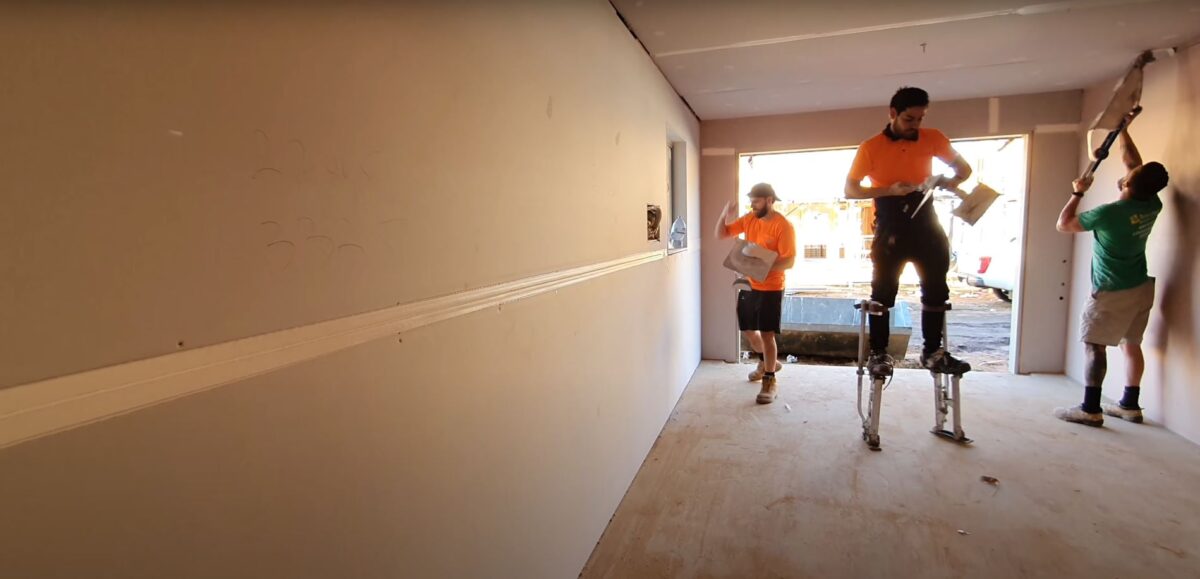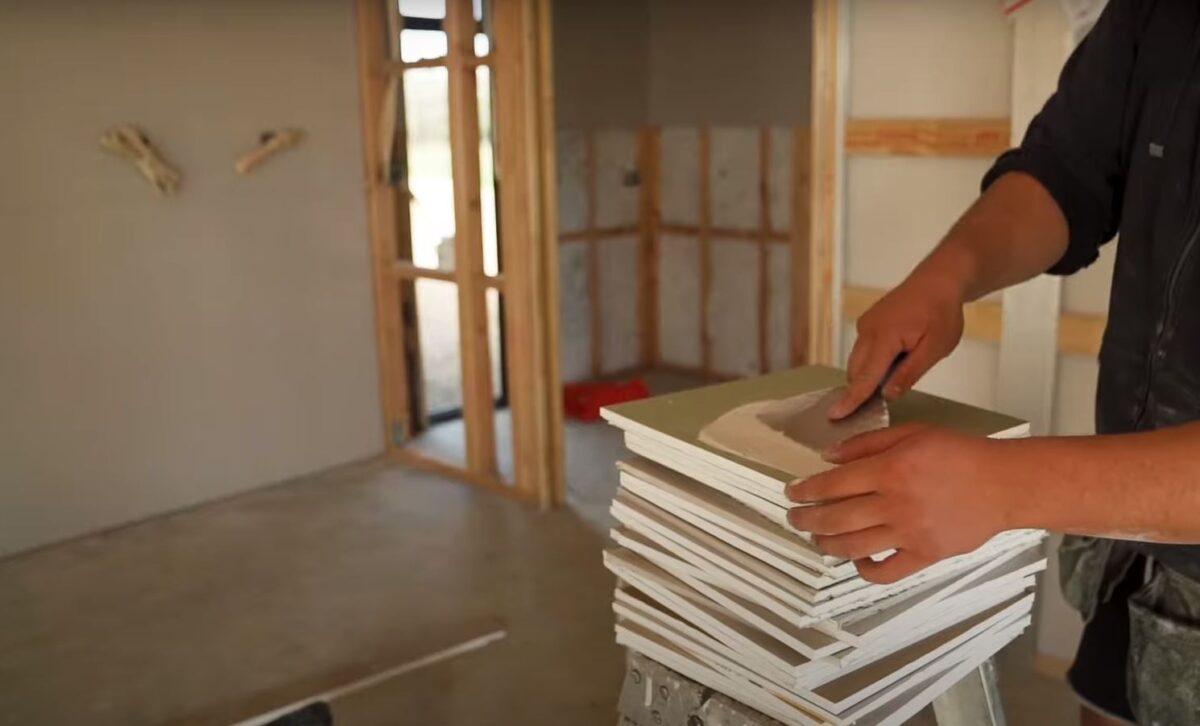A common query among many Auckland homeowners embarking on home renovations is the potential toxicity of gib board. With a boom in the renovation sector, particularly in buzzing suburbs like Remuera, understanding materials is paramount. Let’s dive into the intricacies of gib board and its potential impact on health and the environment.
Understanding Gib Board Composition
Gib board, a cornerstone in the world of interior construction, has seen widespread use across Auckland homes, both old and new. Before diving into its toxicity – or lack thereof – it’s imperative to comprehend its makeup.
Primarily, gib board is a panel used in interior construction to create walls and ceilings. Known to many outside New Zealand as drywall, its simplicity in composition is one of its chief selling points.
Core Ingredients:
- Gypsum: This is a naturally occurring mineral and the primary ingredient of gib board. It’s extracted from mines and then crushed into a fine powder. The name ‘gypsum’ originates from the Greek word for plaster. Known for its fire-resistant qualities, gypsum contains water molecules that, when exposed to high heat, are released as steam, helping to delay the spread of fire.
- Paper: Acting as the outer shell, the paper is what gives gib board its rigidity and form. In most manufacturing processes, recycled paper is favoured, giving the boards an environmental edge. The paper isn’t just for structure; it also provides a smooth surface ideal for painting, wallpapering, or plastering.
Specialty Boards:
As the construction industry evolved, so did the needs of Aucklanders. Depending on where you’re located, be it a humid suburb or a place with temperate climates, there are different types of gib boards tailored to specific needs.
- Moisture-Resistant Gib Board: Designed for areas prone to moisture, like bathrooms or laundries, these boards have additives that repel moisture, preventing mould growth and board disintegration.
- Fire-Resistant Gib Board: With added materials like fibreglass, these boards are designed to be more fire-resistant than standard boards. Ideal for use in garages or rooms with heating appliances.
- Soundproof Gib Board: For homeowners valuing tranquillity, this type of board is designed to reduce noise transmission.
Each of these specialty boards, while tailored for specific purposes, still primarily hinges on the fundamental components: gypsum and paper. As you navigate your Auckland home renovation, understanding this composition can provide clarity on which board is best suited for your needs, ensuring safety and durability.
Addressing Concerns Over Additives
As Auckland’s housing demands rise and its suburbs, such as Remuera and Devonport, undergo waves of modernisation, the quest for building materials that are both efficient and safe becomes paramount. Gib board, widely used in these renovations, isn’t just a sheet of gypsum and paper. Its variants come with additives meant to enhance specific functionalities. But what are these additives, and should Auckland homeowners be concerned?
Deciphering the Additives:
- Fire-Resistant Additives: A significant concern for many homeowners is fire safety. To enhance the natural fire resistance of gypsum, some gib boards include vermiculite or fibreglass. These materials, when integrated into the gib board, improve its ability to withstand fire, increasing the time taken for the fire to breach the board. Fortunately, both vermiculite and fibreglass do not release harmful or toxic fumes under normal conditions. However, when working with such materials, care should be taken to avoid inhaling any dust or particles, which could cause respiratory irritation.
- Mould and Moisture Resistant Treatments: Auckland’s varied climate, especially in coastal areas, necessitates building materials that can withstand humidity and moisture. Thus, some gib boards come with antifungal agents or water repellents. These treatments, while enhancing the board’s resilience against mould and moisture, are generally non-toxic. However, they play a vital role in preventing the growth of harmful mould, which can lead to respiratory issues and other health concerns.
- Binding Agents and Preservatives: Some gib boards might contain trace amounts of agents that help in binding the gypsum and paper together more effectively, or preservatives to increase shelf life. These agents, in regulated quantities, do not pose significant health risks.
Localised Needs and Additives:
Certain Auckland suburbs might have specific requirements based on their microclimates. For instance, a home located close to the sea in Devonport might lean towards moisture-resistant boards, while a home in Remuera might opt for soundproofing, given its bustling nature.
Safety First:
Though the additives in gib boards are generally deemed safe, it’s always a good practice, especially during installation or renovation, to ensure a well-ventilated space and use protective gear. Engaging professional plasterers in Auckland can ensure that the right type of gib board, with the appropriate additives, is chosen for your specific needs.
Dust During Installation and Renovation
Auckland’s dynamic skyline is always dotted with the signs of renovation and construction, with numerous homes adopting the benefits of gib board. While the many advantages of using gib board in interior plastering are undeniable, it’s essential to address a commonly overlooked aspect of its use – the dust produced during installation and renovation. This factor is particularly relevant in bustling suburbs like Ponsonby and Mt Eden, where homes are in close proximity to each other.
The Nature of Gib Dust:
- Origins: The primary component of gib dust is the gypsum itself. When the board is cut, drilled, or sanded, this fine, white powder is released. Along with gypsum, the dust may also contain trace amounts of the additives or binding agents used in the board.
- Potential Irritants: While gypsum dust is non-toxic, it can be an irritant. Inhaling large quantities of dust or having it come into contact with one’s eyes can lead to temporary discomfort. Moreover, the dust can exacerbate symptoms in individuals with respiratory conditions.
Minimising Exposure:
- Effective Ventilation: Whether it’s a renovation in a classic Ponsonby villa or the finishing touches to a new Mt Eden townhouse, ensuring proper ventilation is crucial. Open windows and use exhaust fans to dissipate the dust and maintain air quality.
- Dust Masks and Protective Gear: For those directly involved in the installation or the plastering process, wearing dust masks can prevent inhalation of the fine particles. Protective eyewear can shield the eyes from irritation.
- Clean-Up: Once the installation or renovation process is completed, a thorough clean-up is necessary. Using a vacuum with a HEPA filter can effectively remove the fine gib dust particles from the area. Follow this with a damp cloth wipe-down to ensure no residual dust remains.
Auckland Council Bylaw Implications
Auckland’s regional councils constantly work to ensure construction materials adhere to health and safety standards. For gib stopping in Auckland, the bylaws primarily concern structural integrity and fire safety. While gib board’s toxicity isn’t directly addressed, the underlying principle is clear: any material used should pose no health risks to residents.
In the Remuera district, for example, there’s emphasis on preserving historical homes. Any interior plastering Auckland renovations in such homes must ensure materials align with the home’s age and character, without compromising safety.
Devonport, with its coastal location, may have homes that demand moisture-resistant gib boards. These boards, while treated for moisture resistance, still align with health and safety norms.
Why Engage Professional Plasterers in Auckland?
Now, why would an average Aucklander require the services of professional gib stoppers Auckland offers? The reasons are manifold:
- Expert Knowledge: Professionals understand the nuances of different gib boards and their applications.
- Safety Measures: With the potential dust hazard, skilled Auckland plasterers adopt appropriate safety measures during gib stopping and installation.
- Bylaw Adherence: Professionals are well-versed with regional council requirements, ensuring compliance during renovations.
- Quality Finish: The outcome with professionals, be it interior plastering or gib fixing, tends to be more refined and long-lasting.
Gib Board Disposal and the Environment
While gib board itself isn’t hazardous waste, improper disposal can impact the environment. Recycling gib board or reusing it minimises landfill waste. Many plasterers Auckland trusts advocate for responsible disposal, preserving the beautiful New Zealand landscape.
In Summary
The gib board, as a core material, isn’t toxic. The potential risks, minor as they may be, arise during installation or due to dust. As many Aucklanders seek to renovate or refashion their homes, understanding gib board’s nature becomes essential. Whether you’re in Remuera or Devonport, entrusting the task to professional plasterers in Auckland ensures not just a beautiful home but a safe one too. So, the next time you think of plastering Auckland homes, remember to make informed choices, leaning on expertise for the best outcomes.
Frequently Asked Questions on “Is Gib Board Toxic?”
What is the primary component of gib board? Gib board mainly comprises gypsum, a naturally occurring mineral, and paper, which provides the board its structure and smooth finish.
Are the additives used in gib board harmful? While gib boards do contain additives, such as fire-resistant substances and mould repellents, they are typically non-toxic and are introduced to enhance the functionality of the board.
What precautions should I take during gib board installation in Auckland? Always ensure adequate ventilation in the work area, wear protective gear like dust masks and eyewear, and consider hiring professional plasterers in Auckland for the safest and most efficient installation.
How does gib board dust affect one’s health? Gib board dust, primarily gypsum, is non-toxic. However, inhaling large amounts or getting it in the eyes can cause discomfort. It’s always best to minimize exposure, especially for those with respiratory conditions.
Does the Auckland Council have specific bylaws related to gib board use? The Auckland Council has building codes and regulations that might influence the choice and usage of gib board, especially in specific suburbs. It’s essential to be aware of these, and if unsure, consulting with local experts or the council itself can be beneficial.
Can gib board be used in all rooms of a house? Yes, gib board is versatile. However, for areas prone to moisture, like bathrooms, it’s recommended to use moisture-resistant gib board to prevent mould growth and board disintegration.
How do I choose the right type of gib board for my Auckland home? Your choice will depend on your specific needs – fire resistance, moisture resistance, soundproofing, etc. If unsure, Auckland interior plasterers can provide guidance based on your home’s location, structure, and personal preferences.
Is gib board environmentally friendly? Gib board is relatively environmentally friendly, especially since many manufacturers favour recycled paper for the outer shell. Additionally, gypsum is a natural mineral, making gib board a sustainable choice in interior construction.
How do I clean up after gib board installation or renovation? A thorough vacuum, preferably with a HEPA filter, followed by a wipe-down using a damp cloth, will ensure no residual dust remains in the area.
Why should I consider hiring professional plasterers in Auckland for gib board tasks? Professional plasterers bring expertise, precision, and a deep understanding of safety protocols. Their experience ensures efficient work, minimizing potential risks and achieving desired results.
Key Takeaways on “Is Gib Board Toxic?”
- Gib Board’s Main Component: Gib board is primarily composed of gypsum, a natural mineral, combined with paper.
- Additive Safety: While additives in gib board enhance its functionality, they are generally non-toxic.
- Gib Dust: During installation or renovation, gib dust can be an irritant, though it’s non-toxic. Proper precautions can mitigate its effects.
- Auckland Council Regulations: Be aware of the Auckland Council’s building codes related to gib board use, especially when considering specific suburbs’ requirements.
- Versatility: Gib board is suitable for all rooms, but moisture-prone areas require special moisture-resistant variants.
- Environmental Consideration: With the use of recycled paper and natural gypsum, gib board is a sustainable choice in construction.
- Professional Assistance: Engaging with professional plasterers in Auckland ensures precise installation with adherence to safety protocols.

